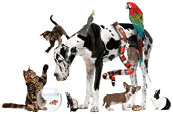

 The Bible says in Romans 1:18 – 20 that “we can know there is a God through the things he has made.” The Bible also says that this is true in space and on earth (see Psalms 19:1 and 139). There is no shortage of design features in the world around us. This “Dandy Designs” column has been run for all of the 42 years this journal has been in production. We have five volumes of these examples available in book form. We also have a website called “dandydesigns.org.” In Discover magazine (May 2014, page 74) writer Molly Loomis has an interesting list that shows how animals are designed to sense the world around them. Here are some examples:
The Bible says in Romans 1:18 – 20 that “we can know there is a God through the things he has made.” The Bible also says that this is true in space and on earth (see Psalms 19:1 and 139). There is no shortage of design features in the world around us. This “Dandy Designs” column has been run for all of the 42 years this journal has been in production. We have five volumes of these examples available in book form. We also have a website called “dandydesigns.org.” In Discover magazine (May 2014, page 74) writer Molly Loomis has an interesting list that shows how animals are designed to sense the world around them. Here are some examples:
- Redwood ants sense imminent earthquakes through electromagnetism in time to evacuate their mounds.
- Star-nosed moles have 22 trunks with 100,000 nerve fibers (six times as many as those in a human hand) that act as tentacles sweeping ahead like a high-speed broom.
- Wolves have a sense of pitch each picking a unique frequency.
- Seals have whiskers that can detect a hydrodynamic trail of fish swimming up to 600 feet away.
- Most animals have a dietary sense of lacking nutrients their bodies are not able to store. They crave foods having amino acids found in those foods.
- The skin of a catfish is like a tongue, detecting the flavor of potential prey from all directions. Earthworms can detect chemical changes, in the same way, using their whole body.
- Snake tongues not only detect prey or enemies, but tell the snake where it is located through an organ known as Jacobson’s Organ.
- Rats and moles have independent nostrils that work in stereo.
- 40% of a shark’s brain is dedicated to smell allowing them to locate prey in the open ocean.
- Worker bees have paramagnetic iron oxide in their abdomens causing them to shrink or swell depending on outside magnetic changes. This is used in navigation.
- Jewel beetles have sensors that detect infrared radiation from forest fires up to 50 miles away.
These are only a few examples of the amazing design in animal senses. It is difficult for us to believe this apparent design could be the product of blind, chance processes.
Picture credits:
© iStockPhoto.com/GlobalP.
